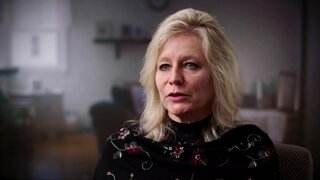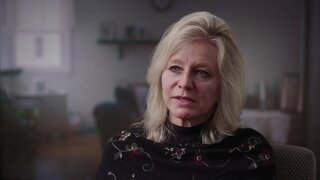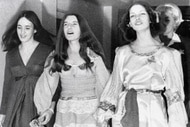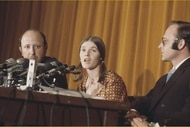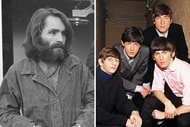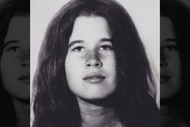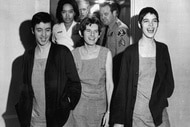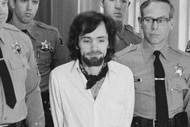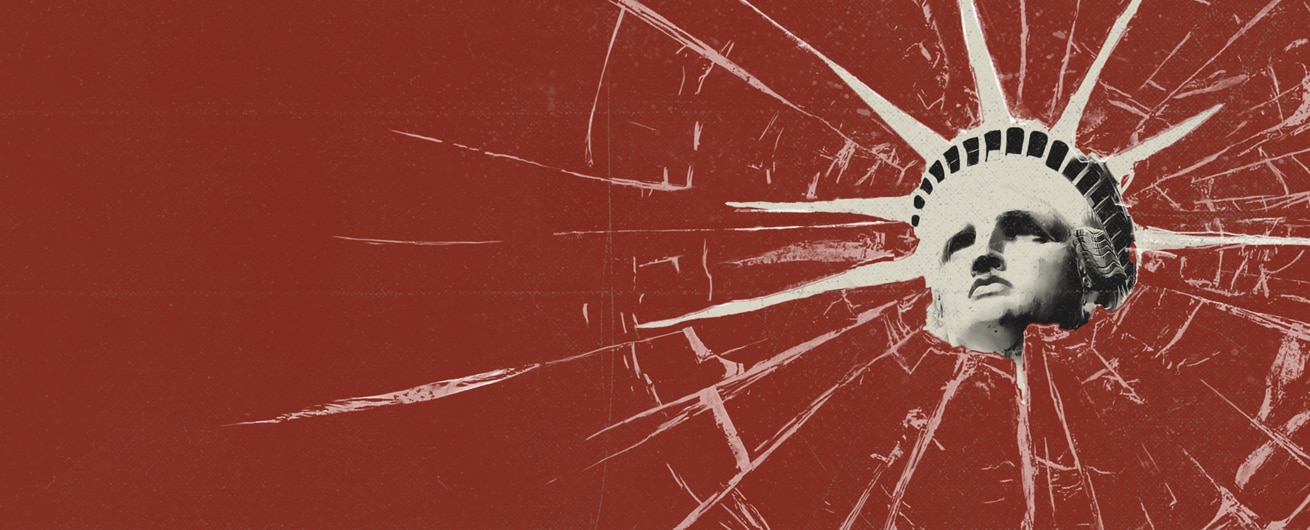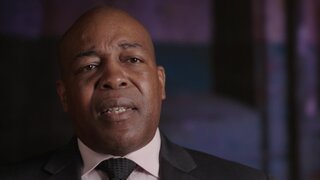Create a free profile to get unlimited access to exclusive videos, breaking news, sweepstakes, and more!
Maitre D's Slaying on New York City’s “Restaurant Row” Helps Solve Cold Case Murder
N.Y.P.D. Detectives discovered the 1997 slaying of a beloved restaurant worker might have been connected to the victim's secret lifestyle.
People from around the world visit Manhattan’s “Restaurant Row,” where tourists can enjoy some of the most incredible food there is. But one Labor Day weekend years ago, the area — just one block from New York City’s Times Square — also served as the backdrop to a vicious murder and a twisting investigation conducted by N.Y.P.D. detectives.
On August 30, 1997, 58-year-old Roger Brooks was due for a Baltimore, Maryland-bound flight from New York to visit his daughter, Christine Blankenship. But when Brooks failed to arrive, those closest knew something was terribly wrong.
“When my dad said he was absolutely gonna do something, he did it,” Blankenship told New York Homicide, airing Saturdays at 9/8c on Oxygen.
Blankenship called police in New York, requesting a welfare check at Brooks' apartment, just above the city’s historic Barbetta Italian restaurant. However, because nothing of Brooks’ absence seemed urgent, police didn’t prioritize the request, prompting Blankenship to call friends with connections with the F.D.N.Y. the next day. Firefighters planned to climb the building to peek into Brooks’ third-story residence.
RELATED: Two Young Women with Big City Dreams Found Dead in Upper West Side Double Murder
“Just as we’re starting to put the ladder up, the superintendent of the building happened to show up,” Manhattan Assistant District Attorney Tom Schiels said.
The super let authorities into the apartment, where Brooks’ lay face down in a pool of blood on the living room floor. When N.Y.P.D. detectives later turned the body, they found Brooks suffered several stab wounds to the abdomen and chest.
The victim’s pants pockets were turned inside-out, and his credit cards weren’t found with his wallet. The home didn’t appear to be ransacked, and there were no signs of forced entry.
“We believed he knew his assailant because there was no break into the apartment,” said N.Y.P.D. Detective George Delgrosso.
For Christine Blankenship and her brother, Mark Brooks, their father’s senseless murder was “devastating.”
Who was Roger Brooks?
Raised on a farm in Clarksburg, Massachusetts, Roger Brooks was described by his children as a gardener with a refined taste for food, or a “foodie,” as Blankenship put it. Brooks served in the U.S. Air Force years earlier and shared a son and daughter with his former wife before splitting in an amicable divorce.
While the children lived with their mother in Massachusetts, Brooks traveled the country, letting his passion for food lead the way. He went on to serve as a Maître D for some of the world’s greatest restaurants, including a decade of service with the Four Seasons in New York City.
Brooks’ hospitality work even paved the way for him to rub elbows with some heavy hitters, including former U.S. President Richard Nixon and Fred Rogers (better known as Mr. Rogers).
“That was his niche,” said Mark Brooks. “Fine dining.”
Referred to by his son as a “gentle man” and a “big friend to anybody,” Brooks traveled to Atlanta, Georgia, in early 1996. He hoped to join the then-up-and-coming restaurant scene until the summer of 1997, when he was offered a job at New York’s Barbetta.
He’d barely unpacked the U-Haul truck before someone stabbed him to death in his apartment.
Investigators at the crime scene soon found evidence that Brooks had a secret lifestyle he hadn’t shared with his adult children. Pornography, photographs, and later statements suggested Brooks was gay and not open about his sexuality.
“I felt a little disappointed because we were close enough where I thought maybe he could tell me,” Blankenship told New York Homicide. “But he didn’t, and it really did not matter to me.”
Detectives wondered if Brooks’ sexuality was factored into the killer’s motive.
An investigation turns toward a mysterious travel companion
News of Brooks’ lifestyle triggered a memory for Blankenship, who told detectives that on Aug. 27, 1997 — just days before the murder — Brooks stopped in Baltimore as he drove the U-Haul truck from Atlanta to New York. Blankenship said Brooks had a travel companion named “Quillis” with him, a young Latin man who gave Blankenship a “bad vibe.”
Police soon discovered Quillis was a busboy at Barbetta and brought him in for questioning. Though the person of interest confirmed Brooks threw him some money to help with the move, he was quickly ruled out as a suspect.

“It was determined that he had an alibi that was kind of rock-solid,” Det. Delgrosso told New York Homicide. “He was nowhere in Midtown on the day of Mr. Brooks’ death.”
Homicide detectives follow the money
Robbery seemed to be the motive, and police soon looked at activity on the victims’ missing credit cards. On the evening of the murder, someone used the cards to make purchases at Sunglass Hut, Macy’s, and a restaurant called Eighteenth and Eighth.
“Jewelry, sneakers, nothing that you would need to live on or anything like that,” said A.D.A. Schiels. “It was all sort of fluff purchases.”
On September 2, 1997, investigators found two store clerks who could give police a description of the man using Brooks’ cards. Both said the suspect was a handsome Brazilian man in his 20s with a slim build and black hair.
Detectives also looked into Brooks’ phone records on the day of the murder, finding several calls coming from a payphone at a Bally’s Total Fitness gym in Chelsea. The lead, lacking surveillance cameras, went nowhere at the time.
Weeks later, the case gained momentum when an N.Y.P.D. detective that had nothing to do with the case struck up a conversation with a waiter at a local restaurant. The waiter said Roger Brooks was a regular patron and that just one week before the murder, he had come with a young Brazilian man for lunch.
Brooks and his guest – matching the description of the man store clerks previously described — inquired about any busboy job openings. The guest left the name “Alan Olivera” and a phone number.
“Detectives have something really important going on here,” A.D.A. Schiels told New York Homicide.
The phone number led investigators to an apartment leased by a Web Tysver. When visiting Tysver at his home — a rock’s throw away from the Bally’s payphone — he did not appear to be the man they were looking for.
Investigators narrow in on a suspect
Web Tysver told N.Y.P.D. detectives that Alan Olivera was a friend he’d met at a bar in the spring of 1997.
“I thought he looked cute, so I walked up [and] started talking to him,” Tysver told New York Homicide.
Olivera told Tysver he was fresh off the boat from Brazil and a student at Columbia University. Tysver gleaned he was something of a “lost orphan” in the big city and let him have the keys to his apartment. He also agreed to let Olivera drop his phone number when looking for work, which led detectives to Tysver.
Tysver did not know murder victim Roger Brooks.
On the morning of Brooks’ murder, Tysver said he and Olivera went to Bally’s gym, where Olivera placed several calls from the payphone. Olivera claimed he had to meet friends for a study session but planned to meet Tysver later that evening.
RELATED: Jail Informant Sends NYPD Detectives on a Frantic Search for a High-Rise Crime Scene
Tysver, Olivera, and Olivera’s boyfriend, Brian, had dinner at Eighteenth and Eighth, where police would later learn Brooks’ credit card had been used. Though Tysver found it “strange” that Olivera volunteered to foot the bill, nothing about Olivera’s demeanor struck him as odd.
“Alan’s presence was kind of sweet, very gentle,” said Tysver.
However, what did strike Tysver as odd was that Olivera had a copy of Time magazine featuring a cover photo of fashion powerhouse Gianni Versace. That summer, Versace was assassinated by Andrew Cunanan, a notorious spree killer who targeted gay men.
Tysver gave detectives contact information for Olivera’s boyfriend, Brian, and when paying a visit, they found Olivera.
“Alan was extremely nervous,” A.D.A. Schiels told New York Homicide. “He was asking, ‘What is this all about?’”
Authorities brought Olivera in for questioning, and while he denied knowing Brooks, the Sunglass Hut employee, and the waiter who took his information picked Olivera from a police lineup.
It was enough for detectives to get a search warrant for Olivera’s apartment, where they found a Brazilian passport with the name “Jose Mariano Araujo Quevedo” and credit cards under the name “Daniel Oliveira,” the latter of which was determined to be the suspect’s actual name.
Police theorized Oliveira and Brooks met when Oliveira applied for a job at Barbetta. But since Barbetta wasn’t hiring, Brooks attempted to help the younger man find employment before being robbed and killed.
Oliveira was charged with first-degree murder.
The Murder of Angel Roman
Oliveira pleaded not guilty and was booked at Rikers Island to await prosecution. But in November 1997 — about one month after Oliveira’s arrest — Det. George Delgrosso made a shocking discovery.
“I was babysitting a prisoner in the squad room, and I just grabbed the wanted flyer bracket off the wall, started reviewing them,” Delgrosso told New York Homicide. “At which point, I found a wanted flyer from the 19th Precinct, Manhattan North, ‘Wanted for Homicide.’”
On March 18, 1997, a man believed to be named “Mario Antonio” killed 51-year-old Angel Roman. Like Brooks, Roman was an older gay man stabbed multiple times in his Upper East Side apartment and robbed of his credit cards.

Roman’s body was discovered after his roommate, Jesus Vega, returned from a Puerto Rico vacation and found Roman dead on the floor. Vega identified “Mario Antonio” as a Brazilian man purporting to be a Columbia University student and a recent friend of Roman’s.
Homicide detectives found “Mario Antonio” used Roman’s bank cards at a local A.T.M., capturing the suspect’s image, which was circulated on the flyers.
“The person in that photograph was Daniel Oliveira,” said A.D.A. Schiels.
Vega also identified Oliveira in a police lineup.
Prosecutors consolidated both murder cases, and on February 13, 2001 — three and a half years after Roger Brooks’ murder — Oliveira was convicted for both killings.
“I looked him right in the eye and told him what he stole from our family,” said Christine Blankenship.
Daniel Oliveira is currently serving two life sentences to be served concurrently without the possibility of parole.
Watch all-new episodes of New York Homicide, airing Saturdays at 9/8c on Oxygen.

